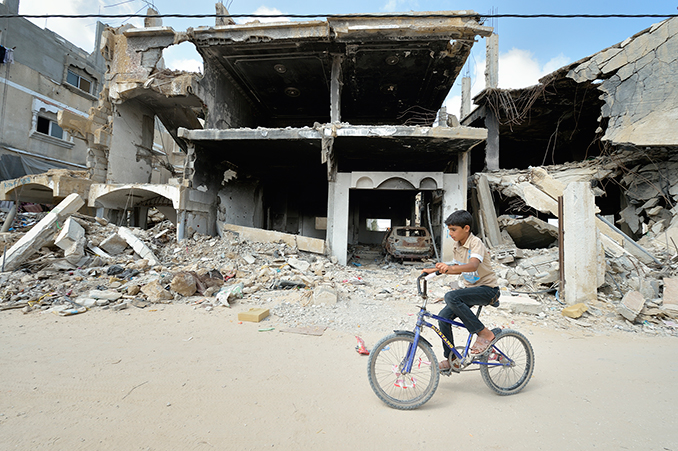A guest blog from Neil Graham at Embrace the Middle East reflecting on his recent trip to Gaza and sharing what the tiny, shrinking Christian population there is achieving, against the odds:
I have lived in Cairo, Amman and East Jerusalem and hold degrees in Arabic and Middle Eastern Studies. I’ve volunteered for UNRWA in a Palestinian refugee camp in Jordan. Yet I’d never been to Gaza, and for very good reason: for over a decade, Israel’s blockade has prevented almost anyone but the smallest number of aid-workers entering, and hardly anyone to leave.
This year I finally visited Gaza. I knew the history, politics and statistics. I knew that nearly half the population are unemployed and 4 out of 5 people are reliant on humanitarian aid. But, quite simply, none of my experience or knowledge was remotely adequate to prepare me for what I experienced.
Living conditions are staggeringly inhumane. Virtually all of Gaza’s water is now unfit for human consumption. Few can afford bottled water so rely on desalinised water of such poor quality that it tastes and smells of salt. Power cuts are frequent, often leaving people without electricity for 16 hours a day. Charcoal fires are used for heating which in overcrowded refugee camps, are a recipe for disaster. I met numerous small children who had suffered burns.
And it was the children that really got to me. Gaza is one of the most densely populated strips of land in the world, and more than half are children. With virtually no safe places to play, I watched them clamber through rubble and dodge cars. I saw a child with Downs Syndrome sitting alone on a kerb playing with mud. At a clinic I met malnourished and anaemic babies. One mum broke down as she told me she could barely scrape together one meagre meal a day for her children.
And I met Adam, six, who has rheumatoid arthritis and sleeps on a thin mattress on a cold concrete floor. I remember thinking it must be excruciating for him, yet he was cheerful and full of smiles.
I would have left Gaza utterly without hope, were it not for kids like Adam and the inspirational work of Embrace’s Christian partners. Father Mario, parish priest of the Holy Family Church in Gaza City told me through tears: ‘Life here is so hard, but Gaza is so beautiful. When you see people with nothing, you fight for them. We need to keep the body of Christ here in Gaza. There must be a Eucharist presence”
And Embrace’s partners are fighting to do that. The YMCA is a haven for families from across the Strip. Children we met there taking part in the Sports for Change project were happy and finding direction and purpose.
At Al Ahli hospital healthcare and social workers are dedicated to reaching the poorest of the poor who otherwise miss out on basic healthcare.
And at the Near East Council of Church’s well baby clinic I saw an endless procession of children, like Adam being checked and treated for illness and disease.
So, it was with a mix of fear and hope that I left Gaza. Fear, because I finally saw for myself, the place where people are desperately struggling to survive in worsening conditions, and who are nearly invisible to the world. Hope, because despite Christians only numbering 1,200 in 1.8 million and at risk of dying out within a generation, they are providing healthcare, education and community development projects across Gaza.
There is much about Gaza that may be beyond anyone’s ability to change but in its Christian community I found people committed to focussing on what can, rather than what can’t, be done.
Embrace have launched an appeal for Gaza, raising funds for projects bringing relief and hope.
Photo credit: Palestine, 2015, Jeffrey


